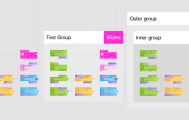How Dreamler Can Facilitate Global Collaboration
- Oct 27, 2015
- By Thomas Wingate
[This blog post by our co-founder Thomas Wingate originally appeared on the Ekipa Blog Osctober 27, 2015]

Dreamler — a collaborative real-time environment for visual planning and project management
A Problem Worth Solving
Realizing big ideas is really hard, I should know, I spent the first 20 years of my career combining CAD, code, automated manufacturing and design to push the boundaries of architecture and construction. It was an amazing but ultimately frustrating journey. Despite grand visions, gigantic budgets, and some of the best and brightest people, all projects suffered from the same problems; increasing costs, delays, wasted material and human resources, inefficient execution and compromises to the original vision.
Making plans that actually work in practice is not easy!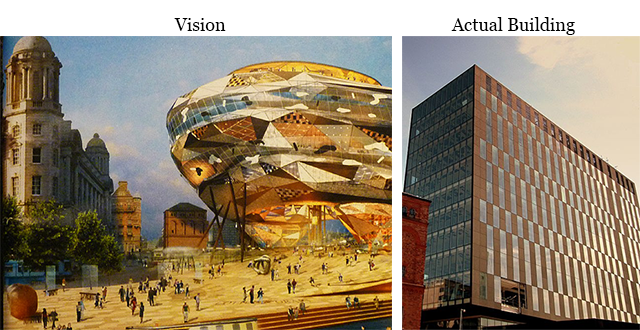
Remarkable inevitably turned dull and square. Why was this happening? What makes the process of bringing a big idea to life so difficult? Surely this a problem worth solving?
Dreamler is the product of 10 years spent exploring how to solve this problem.
Some Things Are Broken
Any project of reasonable size is almost always a distributed project. The supply-chain consists of multiple stakeholders and participants across multiple organizations, often in different geographic locations. The need for well functioning, adaptive plans and methods is obvious, yet there are a lot of problems that can be observed:
The only thing we can be sure about the future: things will change. We need adaptable plans @dreamlerapp Click To Tweet
1.There appears to be a lot of confusion between organizing, planning and scheduling. Planning and scheduling are not the same thing; Planning is the art of figuring out what actions to take in what order with the resources needed in order to efficiently meet deadlines and achieve objectives. Scheduling is the art of figuring out when to do what with the resources at hand. The two activities obviously go hand in hand but to jump straight into scheduling without paying attention to planning is a bad idea.
What about a simple to use tool that helps teams collaboratively plan projects? What about a tool that is so fast and easy to use that we do not get stuck with big plans that are hard to adapt?
2. It is all too easy for teams to talk about “the plan” in almost abstract terms. Visually representing goals, strategies and actions is a very powerful medium (check out Tom Wujec’s TED talk). The classic military operations room table with models representing forces and ships has a lot going for it: Without a shared, mutually understood and easily accessible visual representation of a plan it is really easy to misunderstand each other.There are of course plenty of tools to help build such visual models. Process modeling languages (e.g. Flowchart, UML, BPMN, IDEF, etc.) are very powerful but most tend to be too hard to master for everyday use. Furthermore they are generally geared towards documenting process, not so much adaptive modeling and managing of ongoing projects.If we back up a few years to the 1950s, we find some of the origin of a lot of commonly used planning methods: PERT and CPM. This type of visual network planning has been around for a really long time and is very powerful but again, too complicated and time-consuming to use in daily practice.
What about a simple to learn (10 min learning curve) tool that helps teams collaboratively build visual maps of how to achieve their goals?
3. The Gantt-chart is the default standard when it comes to project planning. When used right it is a powerful visualization, but this appears to be hard to master in practice so you end up needing a planning expert to manage it. Not great for collaboration. Gantt has several limitations, perhaps the biggest one is that you can’t really use it for planning to plan from strategic down to the to-do level for any reasonably sized project, making the chart less meaningful to the individual team member.
What about a tool that allows teams to collaboratively plan projects from a strategic level all the way down to the nitty-gritty of daily tasks and communication?
4. The typical agile PM tool (e.g. Asana, Trello, etc.), is essentially a glorified list-of-lists with added communication and document sharing. A list of lists is a great general purpose data-structure and the tools based on it do a fantastic job of keeping track of a team’s tasks, but they largely fail to describe how individual tasks relate to the big picture objectives, the dependency between tasks and the actual logical flow of work to be done to reach project objectives in the most efficient way. You often need an additional person (PM/PO) for this. It’s really easy for the team to become short-sighted and just roll up their sleeves and just start working without ever thinking about why they are doing things a certain way.
What about using a different data-structure, a directed graph, to build networks of tasks to visualize the flows of how a project fits together?
Collaborative Real-Time Environment For Visual Planning & Project Management
We created Dreamler with something very specific in mind: A simple to learn visual language that allows distributed teams to collaboratively build better plans for how to bring their big idea to life in a more effective way. Technically it works very much like a multiplayer game: A server that keeps track of the “world” and a client that renders the world at 60 FPS using OpenGL and lets multiple users interact with the world and each other in real-time.
We chose a different route compared to many of our competitors, opting for an installed client written in C++ rather than browser tech. By taking better advantage of CPU and graphics hardware we can easily show 100,000+ nodes on screen to 100+ concurrent users in a beautiful, highly responsive environment with very low latency. This would be impossible using a browser.
Dreamler is not only about building great plans. Once you have a plan the team uses this to manage the project, replacing the need for a separate task management tool.
Key Principles – Designing Dreamler
Easy To Learn, Easy To Use
A complex world requires tools that don’t get in our way. Dreamler does not require a lot of prior knowledge. It is not a tool for PM experts, it is a tool for self-organized teams to collectively build better plans. Getting started with Dreamler is really easy, most users are up and running in 5-10 minutes.
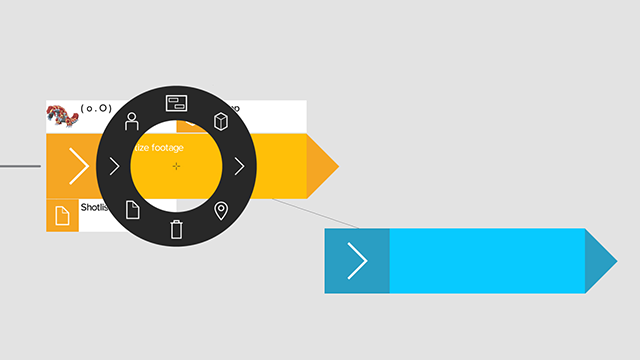
Everybody Visually On The Same Page
Using a simple visual language, people work together in real-time to build a visual map of their project. Working this way it is much easier to understand how all the pieces of a project fit together and how to best achieve project goals. This is especially helpful for globally distributed teams. Here’s something more about how we design Dreamler.
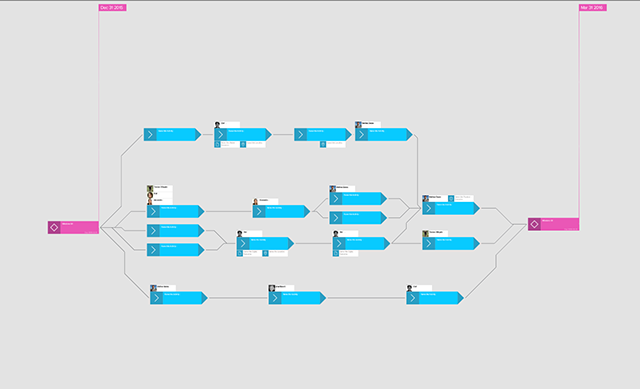
Unify Strategic Goals With Operative Tasks And Communication
As you zoom out of a project map dynamic level of detail aggregates what you see into an overview image of how the whole project is doing, letting you quickly assess progress in relation to milestones and see any potential problems.
As you zoom in, more and more details are revealed. Fully zoomed in on an activity you can view all the details needed to execute the task, including detailed descriptions, responsible persons, associated documents and other resources. You can also discuss task details through a chat.
Dreamler makes it easy to get strategic plans and goals from the board-room Powerpoint presentation and combine with detailed operative plans and daily work.
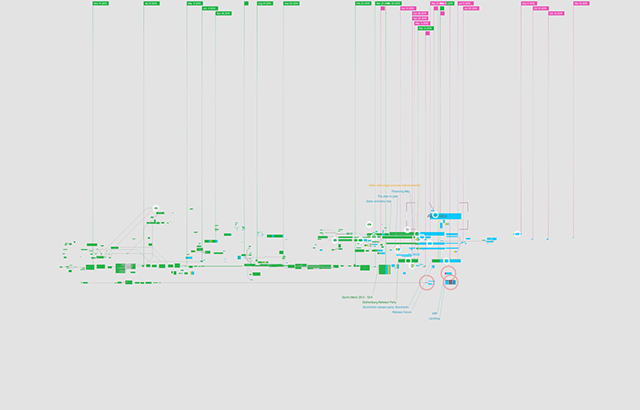
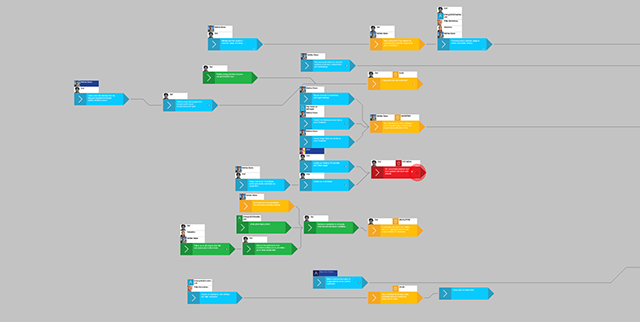
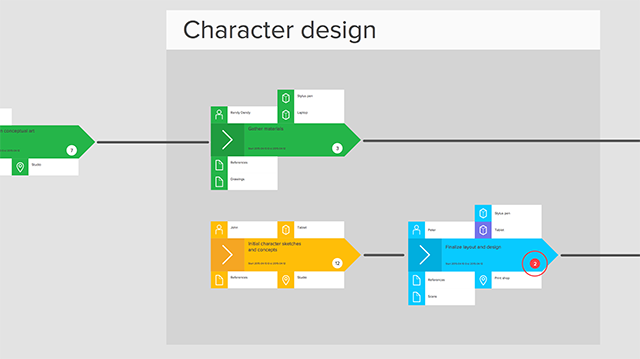
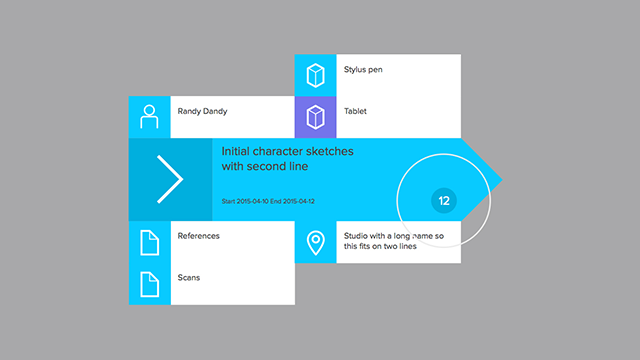
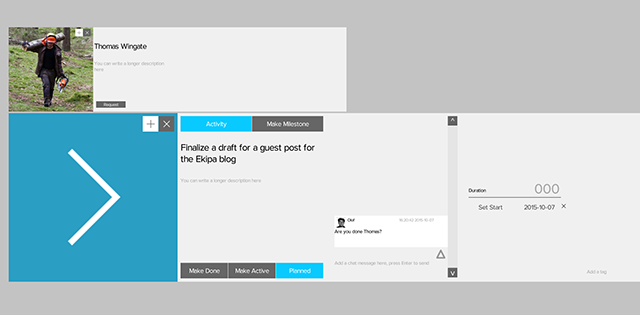
Engaging User Experience
Engagement plays an important role in productivity in an organization or project. With this in mind we developed Dreamler to not only look good but also to be as effortless and dynamic as possible to use. Tools should not stand in the way of us collaborating smoothly–micro-interruptions can be a major flow-breaker. That’s why we built Dreamler using the same technology as realtime multiplayer games (think World of Warcraft). Delays in our real-time experience is measured in milliseconds!
Multiple people can access the same project board simultaneously from anywhere, experiencing other people’s actions as they happen. You see what they are currently working on, where they are on the map and what they look and point at.
This translates directly into a more responsive and engaging environment.
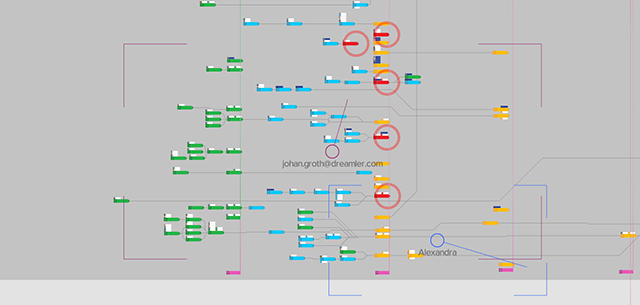
Dreamler is a bold move towards using a different type of data-structure and real-time games tech to visualize projects and augment collaboration between people. For any team, large globally distributed or small and local, to work dynamically with the least amount of waste they need an adaptable, clear, easy to understand shared view of the project.
Read Next : Nyréns Architects: We wouldn’t be able to do this without Dreamler


